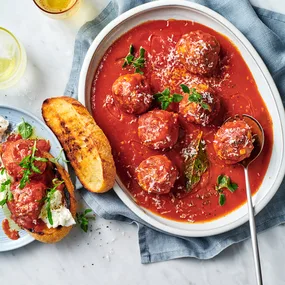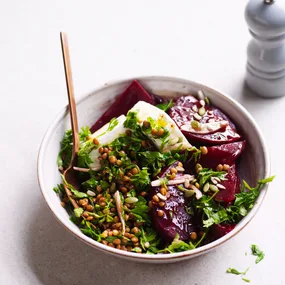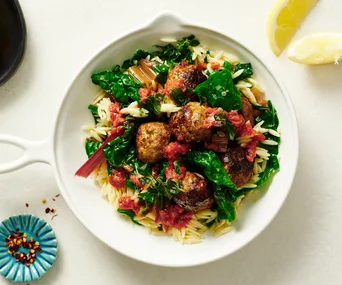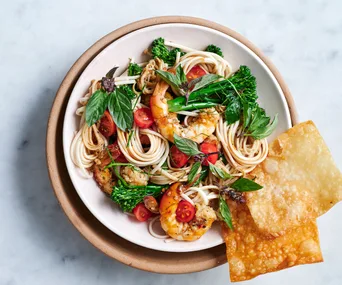Great burgers aren’t all that easy to find in Australia. Beetroot isn’t the problem; it’s the impulse to fancy them up. Fancy bread is definitely one of the most common mistakes. A burger calls for soft white rolls, not sourdough; the bun is really just a wrapper for the meat. (If you’re patient, consider steaming the buns rather than grilling them – they’ll be perfectly giving.) And the use of prime cuts (let alone, gasp, a low-fat mix), though well-intentioned, is definitely a no-no.
The meat is the star and should be treated as such. But don’t treat it like a steak, salting it in advance and bringing it up to room temperature. Treat it instead like you would charcuterie, working cold straight from the fridge and handling it as little as possible. Do this and the fat in the meat (a good amount of fat is what makes for a juicy burger) stays cold and the patty will hold its shape without any binder. That’s right: your patty should be 100 per cent meat. No egg, no seasoning and, god help us, no breadcrumbs.
Bespoke burger mince blends are all the rage at top American burger joints, but as much fun as it is tinkering with the percentage of skirt steak and intercostals in your mix, a reasonably fatty bit of chuck is hard to beat. The trick is to get a butcher to mince it to order (a coarse grind is good), ideally the same day you’re planning to cook your burgers. If it’s dry-aged or wagyu or grass-fed or whatever, that’s great, but the fat is the key factor.
The two other keys to maintaining the integrity of the meat are salt and proportion. Aesthetically speaking, a burger shouldn’t be marred by a too-tall patty with a bun perched sadly on top. You want the meat thick, decidedly wider than it is high, and you want it to cover the bread. The trick here is to shape the patties so they’re slightly wider than the bun you’re using. They contract while they cook, so a good deep indent in the centre of the uncooked patty is essential if you want a nice, evenly shaped final product. Shape them lightly, too. There’s no need to smoosh them down; just make sure they’re stuck together. The other thing you don’t need to do is mix salt through the meat. We’ve had the best results simply seasoning both sides of the patties very thoroughly with salt immediately before they go on the grill. Pepper can be left till after the cooking’s done.
Whether you’re using a char-grill pan, a barbecue or a griller, it’s important to let a good crust develop on each side. If you’re making cheeseburgers, it’s also important to put the cheese onto the meat while it’s cooking so it has the chance to melt properly. Here’s another place to resist the urge for fanciness: Gruyère works, but supermarket cheese is a valid burger tradition. It’s been a subject of heated debate in theGToffice. We’ve found Coon cheddar slices give excellent results. (Why not try one of each before jumping on either bandwagon?)
Then there’s the question of how you rest the meat. Peter Serpico, chef at New York’s Momofuku Ko, and a Yoda-like figure in our quest for burger perfection, suggests slipping the cooked meat into the buns and resting them wrapped in foil or baking paper for a minute; the meat relaxes, any seeping juice is saved, and the bread gets a gentle steaming from the inside.
Toppings are very much down to the individual. We like iceberg leaves, pickles, mustard, sliced onion and tomato (but only if it’s very ripe), but bread, cheese and meat alone has its satisfactions, as can more baroque constructions. As for traditional go-Aussie additions such as beetroot, fried egg and pineapple, we say to each their own, but there’s definitely something to be said for making sure the meat remains the star.










